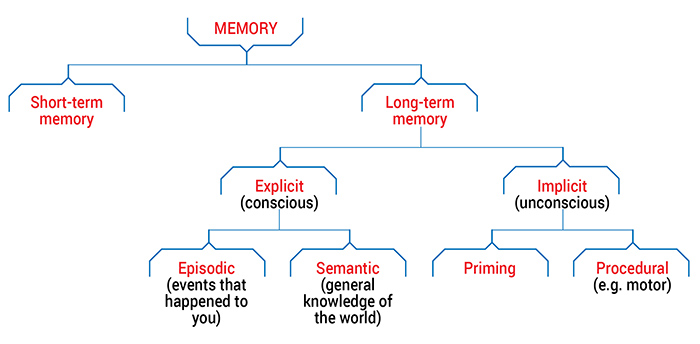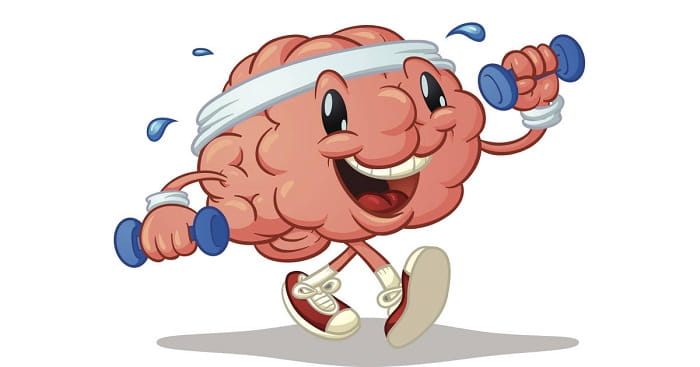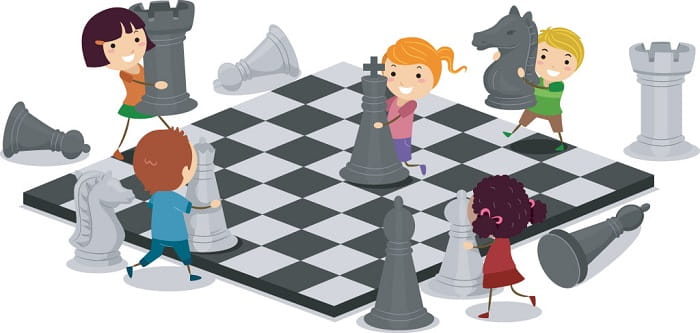Why is working memory important, how to test it and how to improve it? Let’s talk about the ways of how to improve the working memory of your child. Maybe you even find some tips for yourselves!
Types of memory
Have you ever been in a situation where you’re trying to remember some phone number by constantly repeating it? And then someone interrupts you and all that hard work goes down the drain? Pretty annoying huh? Well, don’t worry. It happens all the time. To all of us.
On the other hand, we remember some information that we learned years ago. Then how come we can’t remember something we learned ten minutes ago? The answer is – because those are different types of memory.
Short-term memory in case of remembering the phone number and Long-term memory in the second case.
Long-term memory is theoretically unlimited, but as we are well aware, that doesn’t mean we can recall every information we ever learned. Information we use more often is, naturally, recalled more easily. But even some memories we visit rarely can stay vivid if they are connected to some emotional event. Some things we just remember without trying, like where is our house or lyrics of that song stuck in our head. We call that type of memory implicit.
A special subcategory of the implicit memory is the procedural memory – “know how”. It’s acquired by repetition and practice and very hard to forget. As they say, you always remember how to ride a bike.
The opposite is the explicit or declarative memory – when we have to really work hard to save that information for future use. Most of the factual knowledge we learn in school belongs to this category. This type of knowledge is much easier to forget if we don’t revisit it periodically.
The other big category of memory is a short-term memory. As the name implies, it’s limited in size. How limited? The magical number is said to be 7 (+/- 2), but there are methods (like chunking) that can improve it.
Working memory
Okay, but what about the working memory? Frequently, by working memory, we think of the short-term memory. And really, they are closely connected, the distinction is mostly academic.
Short-term memory is concerned with the storage of the information, while the working memory relates to the manipulation of that information. Working memory is really important because it helps store information in long-term memory and has a direct impact on our ability to learn and concentrate.
There is a strong correlation between working memory capacity and performance in complex cognitive tasks, like problem-solving, reasoning and reading comprehension. Research has shown that children with low working memory capacity have trouble with learning and have lower academic scores through life. Sounds pretty scary, right? Well, it is! Luckily, there are things we can do to improve that fragile working memory.
How to test your child Working Memory?
TEST 1
One simple test you can use in children age 4 to 7 is to place various colored cups, pencils, and erasers on the table and give them instruction (improvisation is encouraged!):
“Pick red pencil, then pick blue eraser, and put them in a red cup.”
Then let your child execute the instructions. If the child is able to follow most of the instructions, great! More than two mistakes could indicate some issues and should be investigated further. Of course, don’t jump to conclusions just yet! Maybe they are tired or bothered by something. Repeat the exercise few times and keep it light and playful.
TEST 2
Start by saying a series of three numbers to your child in intervals of one number per second.
Example: “nine, four, two.” Then ask your child to repeat them. Was he successful? Great! Now try with four numbers. Example: “four, three, seven, one.” Again, ask your child to repeat them.
Do this until he is unable to repeat the pattern and you’ll get a result of their working memory capacity. Four is a great result for a preschooler. If the child can’t repeat two numbers, try some other time and look for other signs of attention or memory struggles. Remember to stop when your child is unable to repeat the sequence because you don’t want to frustrate him.
How to improve Working Memory?
There are many ways to exercise your child’s working memory and here we’ll give a few examples. An important thing to note is not to frustrate your child. If he has a hard time, stop. Compliment him for trying and for improving, not only for success. Try to make it as a game, who says you can’t have fun when doing some brain exercises?
- Remember TEST 2? Well, that is also a very efficient way to improve your working memory. You can use it almost anytime and anywhere. Use it as a game, like you say numbers and your child repeats, then your child says numbers and you repeat. You can also wary this exercise with words, colors, or advanced techniques – repeating numbers in reverse.
- Memory game. We all played that and enjoyed it, right? Well, it turns out it’s a great way to boost our working memory! So dust off those memory cards and challenge your child to a duel. And don’t be surprised when they beat you.
- Let your child teach you! When you’re doing something with a child, ask him to explain what you’re doing step by step. That helps them in creating visual, verbal and cognitive connections with the activity they are doing.
- Playing chess. Did you ever think about teaching your child to play a chess? You should. It’s one of the best ways to improve working memory and cognitive processes.
- Chunking. Help your child to develop better strategies for learning and memorizing by teaching him how to chunk. What is a chunk? It’s a meaningful sequence of elements. Remember how short-term memory is limited? What if 1 4 7 are not just three random numbers, but a date July, 14? Then that date would take only one space! Chunking actually naturally occurs as we are mastering some concept. More and more pieces of information are getting interconnected and start to behave like one huge chunk. It’s important to try to organize information to make sense to us, so talk with your child about different ways to achieve that.
- Visualizations. Another somewhat similar concept is visualization. When you try to remember some concept, try to imagine it or even draw it as a picture. This technique is especially helpful in remembering words, for example, shopping list. Next time you go grocery shopping, visualize your shopping list and leave it at home. Fun game for the whole family!
- Origami. Another superb activity for flexing those memory muscles is origami. While you are learning new shapes, working memory and attention are in the overdrive. So much detail to remember. When you make a pig for the hundredth time, it’s mostly in the domain of the long-term, specifically procedural memory.
With some of these techniques, we are positive you will see great results in your child concentration and working memory capacity. As always, creating fun, engaging and supportive environment is the best way to help your child learn. Need some inspiration? Learn how to make and solve Hanoi tower. Or take a peek at our Origami category and get ready for some serious brain exercise.
If you’re searching for some great STEM Activities for Kids and Child development tips, you’re in the right place! Check the Categories below to find the right activity for you.









One thought on “How To Improve Child’s Working Memory?”